MUNICH

A major hub of business, research, medicine and engineering, Munich has two research universities, several colleges, and boasts of several MNCs and technology and science museums like the Deutsches Museum and BMW Museum. From being a modest market town on the ‘salt road’, between Salzburg and Augsburg, to being dubbed the Silicon Valley of Germany, with its electronics and computer firms like Microsoft, SAP and Siemens, Munich has come a long way!
Munich, besides being cosmopolitan, also bears the ‘typically German’ tag exemplified by its Oktoberfest, lederhosen (leather pants), Bavarian waitresses in their traditional dresses (dirndls), sausages, beer steins, etc.
A difficult truth the locals live with is the fact that Munich was the springboard for Nazism, a fact that is reminded even today by the concentration camp in Dachau close by. Munich is where the Nazi movement was born. The city leaders intelligently distanced the Nazi past from the city by highlighting Munich’s pre-Nazi history, the real Munich – a city of excellent architecture, impressive art and captivating music! Hence, the architectural masterpieces of Altstadt (the Old Twon) that were meticulously rebuilt, the Cuvilliés-Theater, the Altes Rathaus, and the Frauenkirche. Fascinating art and history of the city are showcased in its crown jewels, Baroque theatre, Wittelsbach palaces, paintings and parks. Ironically, it was the Nazis that were also partly responsible for rebuilding the much bombed Munich. Before the war ended, most Nazis knew that they will be carpet bombed and their cities destroyed. In anticipation of this, they meticulously photographed each and every building, street, and public areas. After the war, citizens of Germany had a choice on how to rebuild their cities. Cities like Frankfurt chose to let go of the old and chose to build modern cities with glass and skyscrapers. Munich on the other hand, rebuilt the city, replicating meticulously the features of the old city.
Old Town Hall and Marienplatz

The original street plan of Munich was retained and the medieval steeples, Neo-Gothic facades and Neo-classical buildings were all re-created. Cars were blocked entry into the city centre and instead public transport was maximised, especially a very people friendly subway system – the U Bahn. The city planners also opened Europe’s first ‘pedestrian only’ zone (Kaufingerstrasse and Neuhauser Strasse). It has now taken almost 65 years after the last bombs fell to wrap up the restorations.
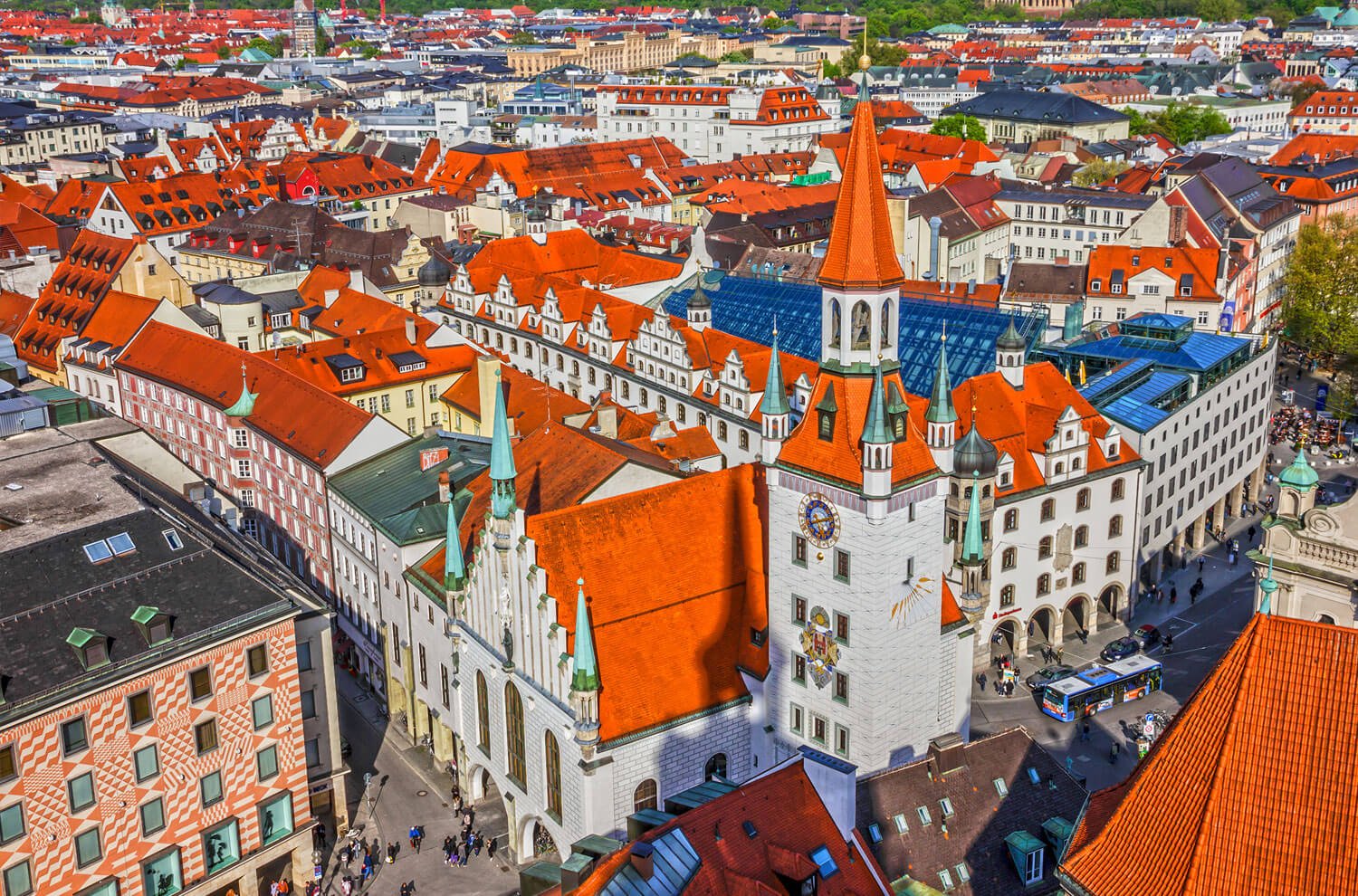
Very symbiotic with Nature, Munich is a clean, cultured and safe university town, which is why it gets consistently voted as Germany’s most liveable city. The rustic feel of the city cannot be missed, in its cleanliness, safety and the Mediterranean pace. The beautiful features of the city too contribute to it being the choice of tourist destination, like its mesmerizing views of the Alps, broad sidewalks, a massive river running through the city, boutiques and eateries and a massive green park. The beer gardens, with huge chestnut trees, welcome the locals during the warm days of the spring. Be it the cavernous beer halls, the Kneipes where people gather for meals and drinks, or the beer gardens, the locals are ever so ready to welcome the visitors to say ‘Prost!’ (cheers!).
The Bavarian capital’s low-key profile has led it to be called ‘Millionendorf’ (‘the village of a million people’), though it is a major metropolis. It gets listed frequently in the top 10 of global quality-of-life rankings and is the most prosperous city in Germany.
When to visit
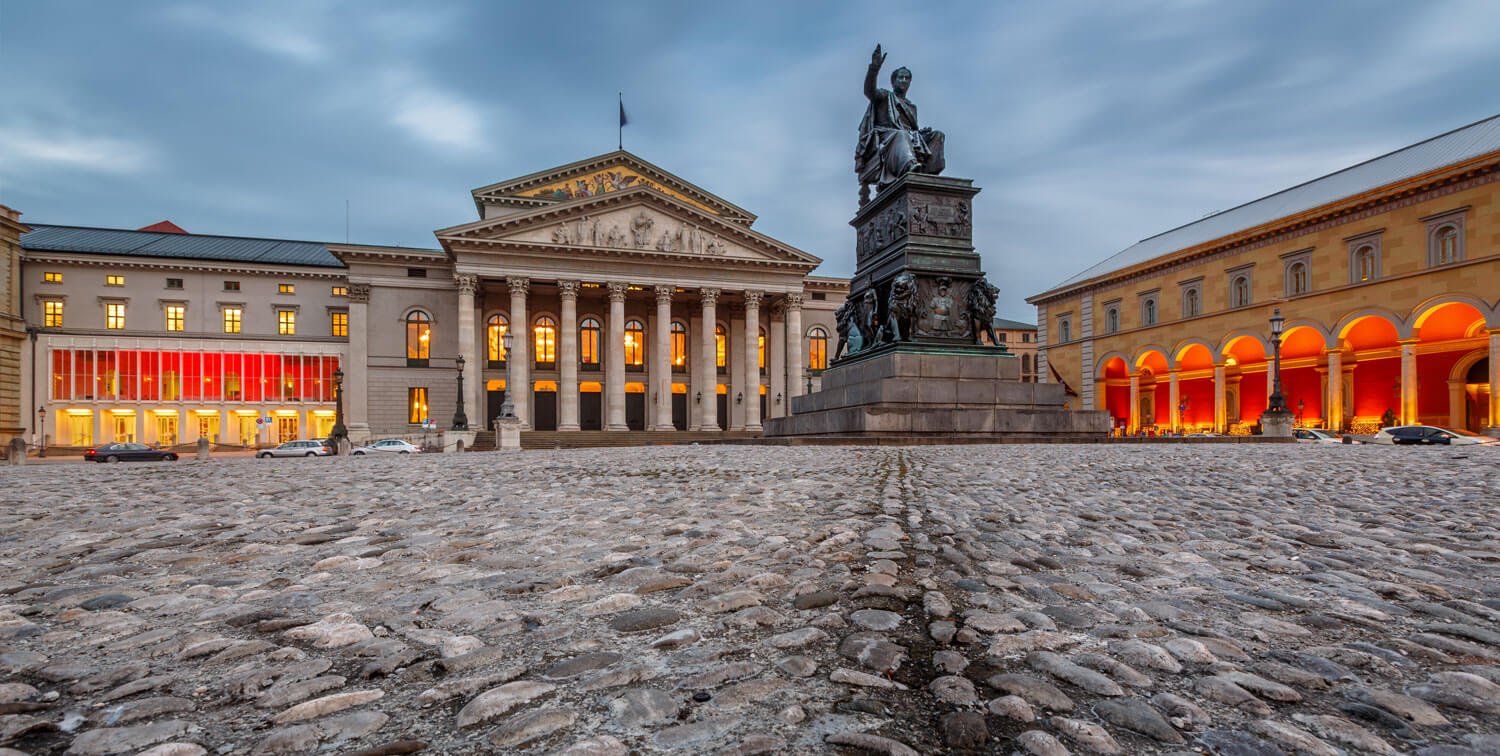
The city gets into the liveliness of the Spring, from its Winter lethargy. May and June are the best months to be in Munich, to enjoy the summer-like weather without much increase in the temperature and the crowd! If these months are missed, September and October can be the next best option.
By September end, the Bavarians, dressed in their traditional dirndls and lederhosen, gather in Munich for the Oktoberfest and other festivals that would closely follow. The shorter days see the trees change into bright yellow and red tones.
Autumn would be the suitable time to visit Munich for those who don’t favour hot and dry climate. But be warned about the unexpected showers of rain. The days are generally sunny and warm until October end.
The holiday months of December and January are the city’s off-season. If you do visit during winter, don’t be discouraged, as the renowned museums and excellent restaurants would welcome you warmly! Theatre and opera can keep you engaged too.
HOW TO REACH
The second busiest airport in Germany is the Munich International Airport. It ranks seventh in Europe and handles 38 million passengers every year. Also a major hub for Lufthansa and the Star Alliance, the Munich airport, has been named after the former Bavarian Prime Minister Franz Josef Strauß.
Based on a worldwide survey of more than thirteen million passengers, Munich Airport has bagged the best airport in Europe title in 2015, and number 3 globally in the World Airport Awards. Over the past 10 years, Munich has been named the best airport in Europe, 8 times.
Munich Airport Center

Located 28km (17 miles) northeast of the City Centre, Munich’s International Airport has excellent air service from all over the world. The airport is linked with downtown by the S1 and S8 lines to the city centre. The subway terminal is below the airport’s arrival and departure halls. Taking 50 minutes, the S-bahn trains leave at 20-minute intervals on both lines. The Tageskarte (day card) for the Gesamtnetz, costing €10.80, is the easiest way, which also allows you to travel anywhere on the system for the rest of the day until 6 a.m. the next day. There is also a bus service which costs the same but is slower than the S-bahn. A taxi from the airport costs around €56 to the city. From 7 a.m. to 10 a.m. and 4 p.m. to 7 p.m. are rush hours and hence; allow an hour for the taxi ride.
By Train

Offering regional and long distance connections to many German cities, including several connections with ICE high-speed trains, Deutsche Bahn uses Munich as one of its main German hubs.
The TGV high speed line connects Munich with Paris and Strasbourg, and the Eurocity and City Night Line (night train) connect international cities like Amsterdam, Budapest, Innsbruck, Maribor Salzburg, Milan, Rome, Venice, Vienna, Verona, and Zurich.
Munich also has two other railway stations, one in the west (Munich Pasing) and one in the east (Munich East), both of which are connected to the public transport system and serve as transport hubs for Deutsche Bahn’s regional and long distance trains.
PLACE OF INTEREST
English Garden (Englischer Garten)
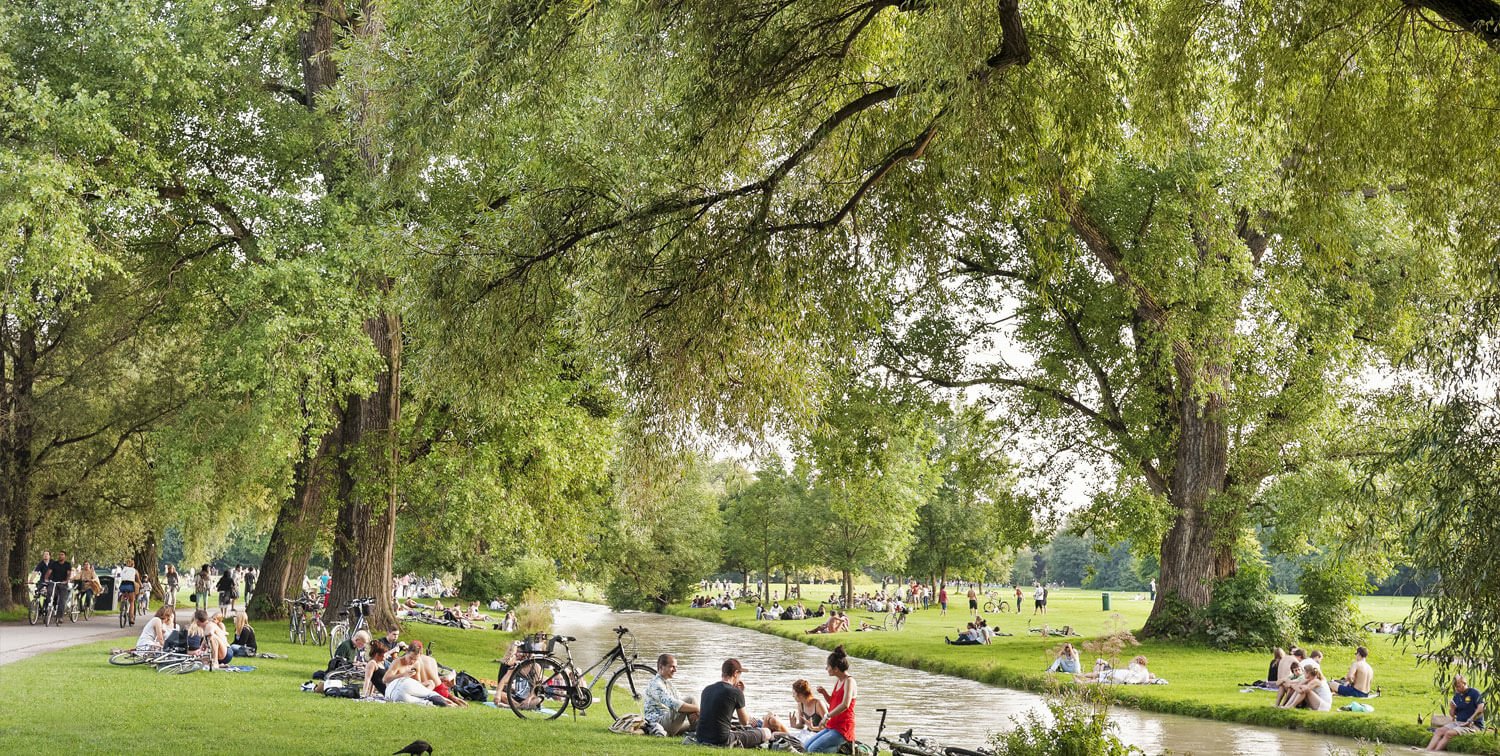
Stretching from the city centre to the north-eastern city limits, this large public park is one of Munich’s must-sees. Reminiscent of the rolling parklands that surrounded the homes of the 18th century English aristocrats, the open informal landscaping is what that gave the park its name! The park boasts of four beer gardens, a lake with boats, and a series of curious decorative and monumental constructions that includes the Monopteros, a Greek temple designed by Leo von Klenze for King Ludwig I, built in 1837 on an artificial hill in the southern section of the park.
A paradise for cyclists, joggers, soccer players, musicians, and sunbathers in summer and for cross-country skiers in the winter, the Englischer Garten has semi-official areas marked for sunbathing sans clothes too. Do not be taken by surprise if you happen to see such naturalists by the flower beds and paths.
Hop on to the tram 18 to go to the English Garten and spend a sunny day. Get off at any one of the park-side stops. Admission is free.

Church of Our Lady (Frauenkirche)
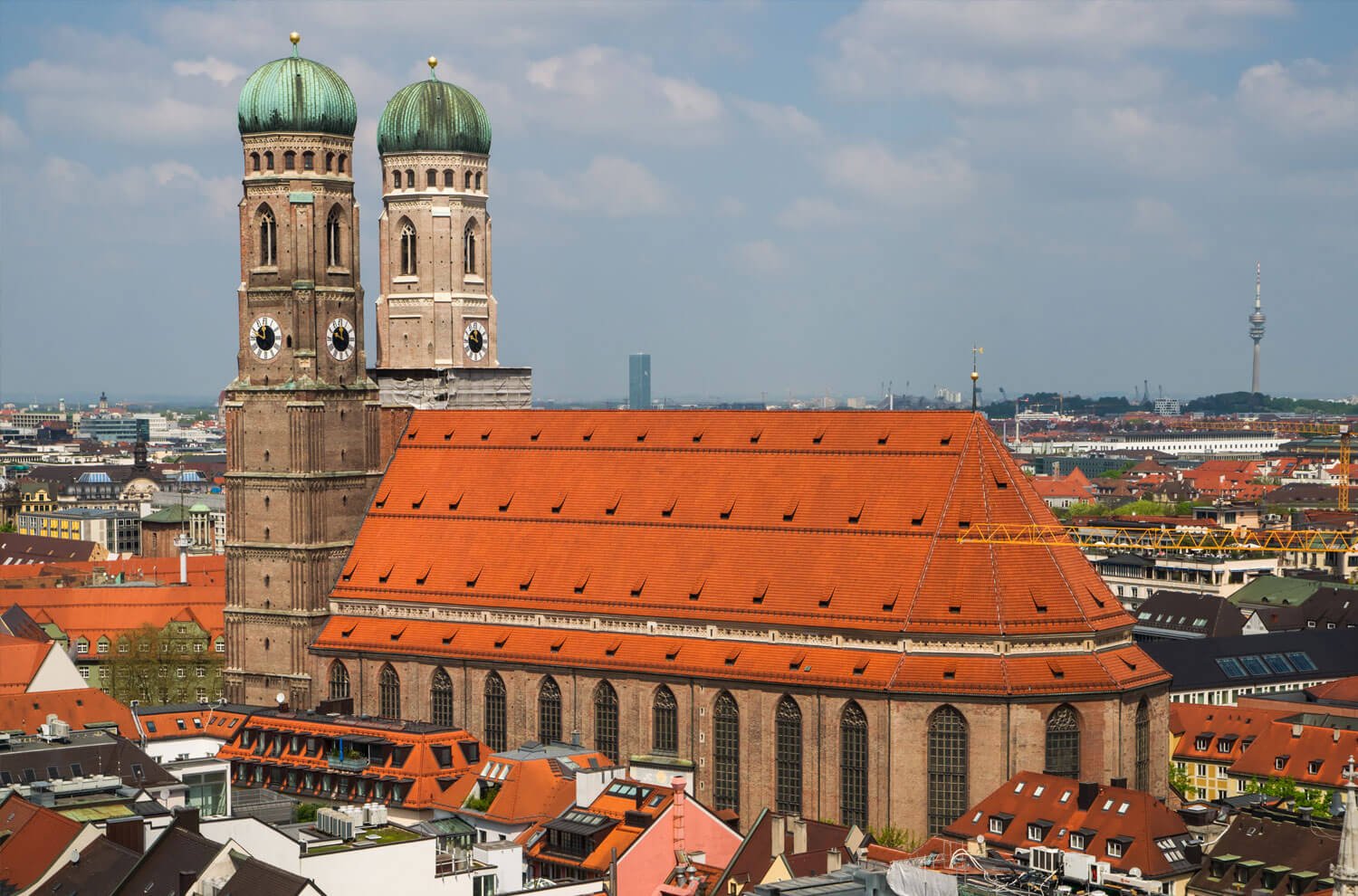
It is a distinct late-Gothic brick edifice with its two 99 metres high towers. Munich’s Dom (cathedral), is an important structure today, as Münchners unanimously voted in a nonbinding referendum, to restrict all new buildings to be below its height within the city’s middle ring road. The main structure of the cathedral was completed in 20 years (1468-88), a record time in that period. The distinct domes were added in 1525.
Restoration was necessitated in the mid-1900s, after the bombing of the Allied forces during WW II. With a small fee to reach the observation platform at the top, the church tour can be wonderful experience.
The Frauenkirche is, off the Marienplatz U-bahn or S-bahn stop.
Deutsches Museum (German Museum)
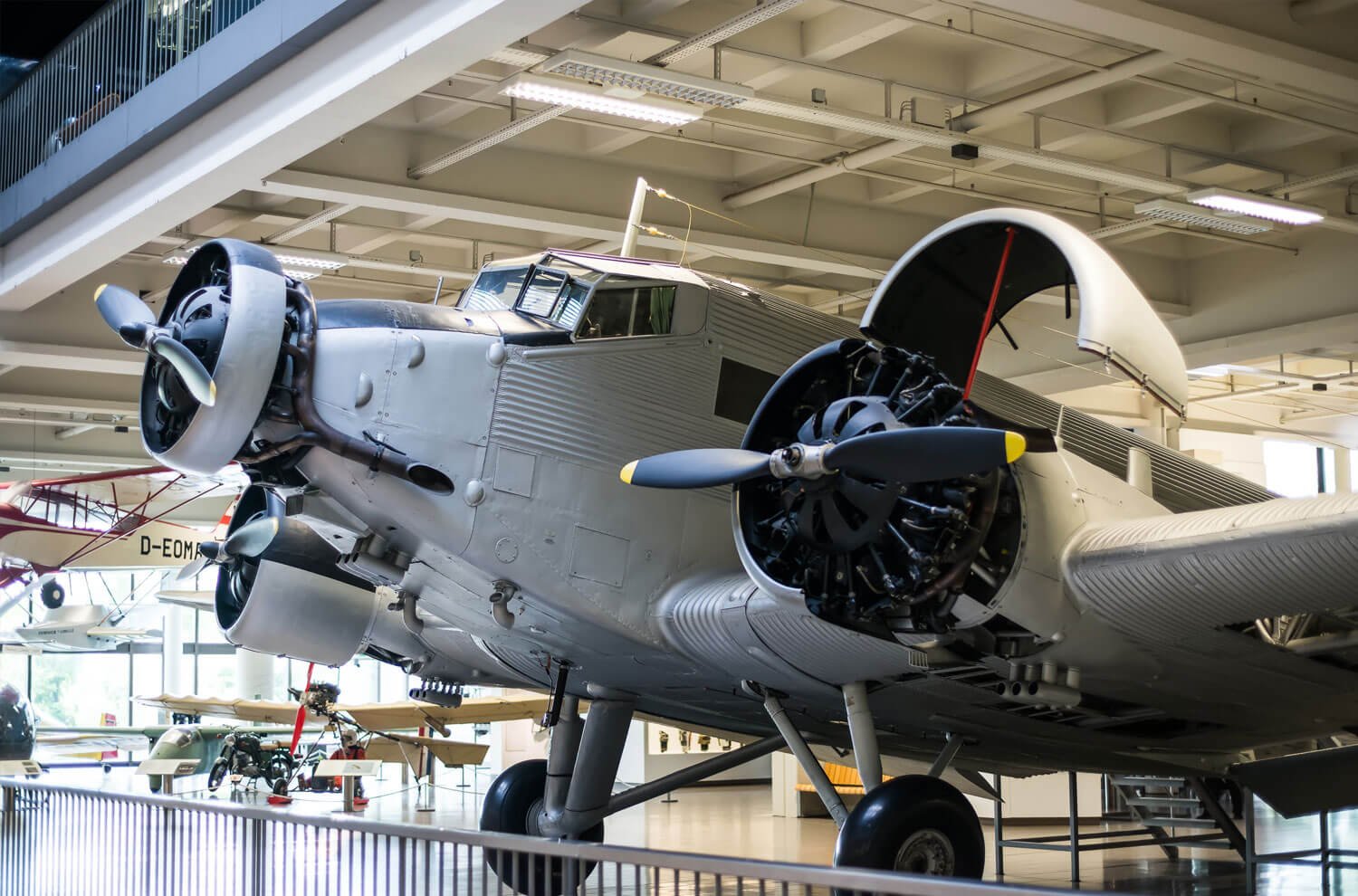
This monumental building, on an island in the Isar River, is filled with aircrafts, vehicles, historic machinery, modern technology and a mine! With six floors of exhibits and 50 exhibition areas, the collection spreads out over 47,000 square meters. The Centre for New Technologies. Has interactive exhibition of nanotechnology, biotechnology and robotics, that could change your thoughts about science forever, are included in the exhibits.
The internet café on the third floor is open between 9 a.m. to 3 p.m. daily. Other cafes are open until 4 p.m. The Kinderreich, a section dedicated to children, allows children to learn about modern technology and science through numerous interactive displays. Children should be accompanied by their parents. The planetarium is the most technically advanced in Europe and has four shows every day. For a 2-hour tour in English, call at least six weeks in advance.
An amazing collection of the museum’s transportation exhibits can be found in the Verkehrszentrum (Centre for Transportation) on the former trade fair grounds at the Theresienhöhe, which has been entirely renovated.
The Deutsches Museum is off the Isartor S-Bahn stop. It is open every day from 9 a.m to 5 p.m. Tickets are priced at €11 for adults and €4 for children.
Old Picture Gallery (Alte Pinakothek)
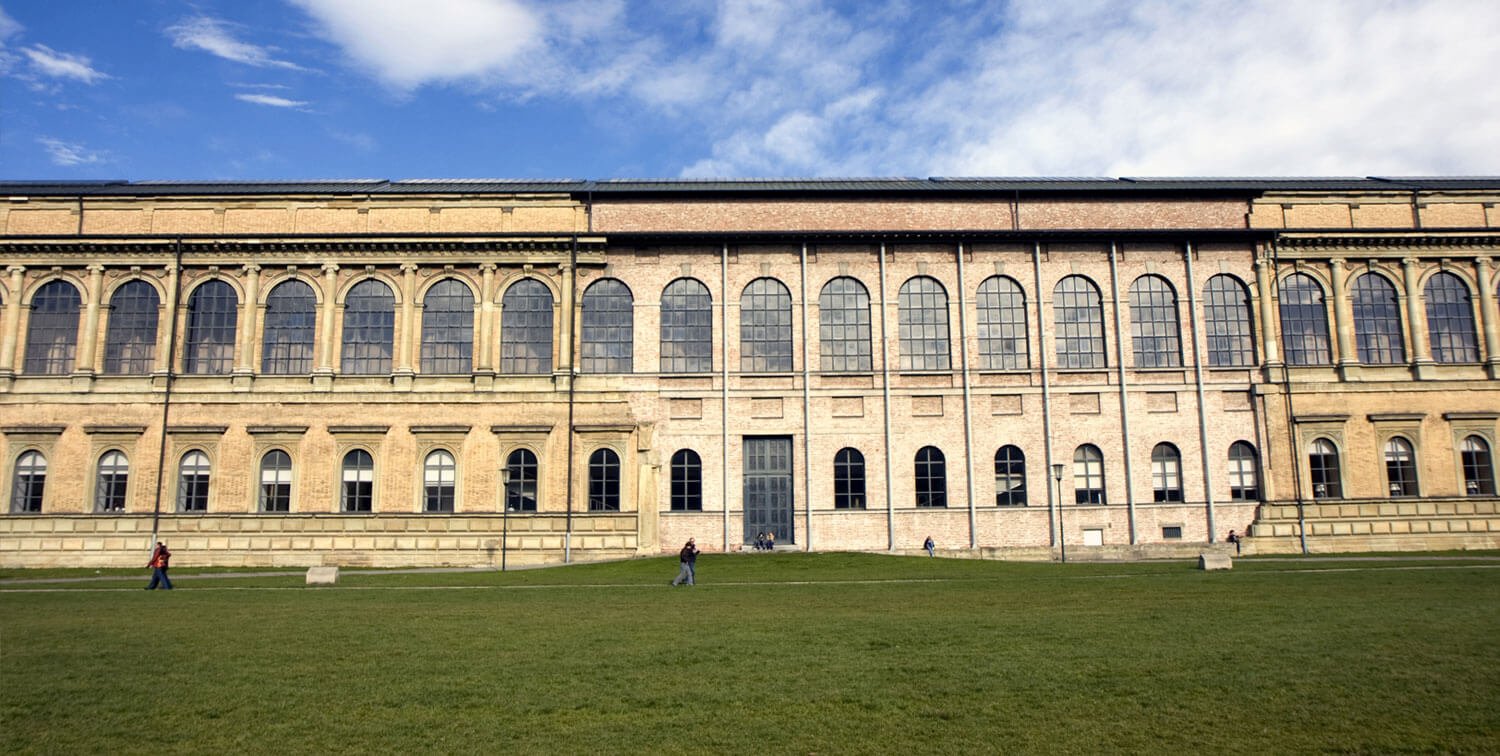
Open from Tuesday through Sunday, from 10 a.m. to 6 p.m., with extended hours on Tuesdays alone, until 8 p.m., the art gallery serves as a magnet for art lovers.
The museum quarter Kunstareal includes the Pinakothek der Moderne, Neue Pinakothek, the Alte Pinakothek and Museum Brandhorst. The collections in every one of these museums are world renowned. The museums are a few hundred meters apart. A day ticket bought at Tageskarte, would provide entry to all these museums and the Schack Gallery in Lehel, and is also cost effective at €12 per person.
Pinakothek der Moderne
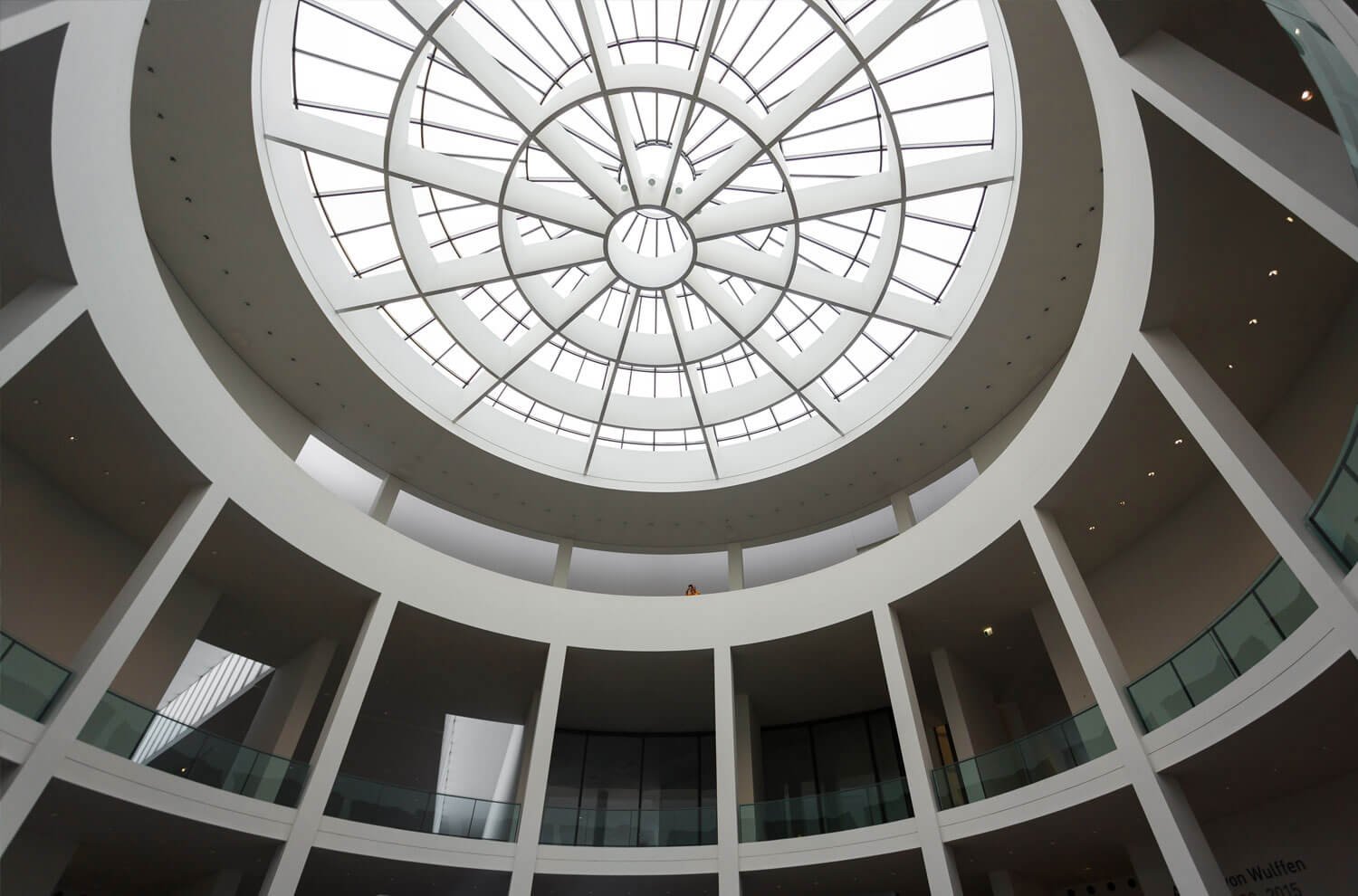
Around 400,000 pieces of art on paper including drawings, prints and engravings by Leonardo da Vinci and Paul Cézanne are all housed in the State Graphics Collection. These works are light sensitive and hence, just a fraction of the collection are exhibited at any given time.
The Architecture Museum stands tall with entire studios of blueprints, drawings, photographs and models by top practitioners as Baroque architect Balthasar Neumann, Bauhaus Maven Le Corbusier and the expressionist of the 1920s, Erich Mendelsohn.
St. Peter’s Church (Peterskirche)

It is Munich’s oldest church but with the smallest place of worship! It is open daily. Alight at Marienplatz by U-bahn or S-bahn. The tour is free but a there is a small fee to climb its tower but you get a spectacular view of Bavaria for your efforts. The church’s glittering altar, the bedecked skeleton of St.Munditia, a revered Christian martyr, allures all.
Marienplatz

Neues Rathaus borders this square that has various shops and cafes. The square is named after the statue of the Virgin Mary, who watched over it for over 3 centuries. Erected in 1638 by the Elector Maximilian I, Marienplatz marks the city’s gratitude for its survival of the Thirty Years War (religious struggle between Catholics and Protestants that devastated vast regions of Germany). In 1960, when the statue was lowered from its pedestal for cleaning, workmen found a small casket in the base, with a splinter of wood believed to be from the cross of the Christ.
Viktualienmarkt (Victuals Market)
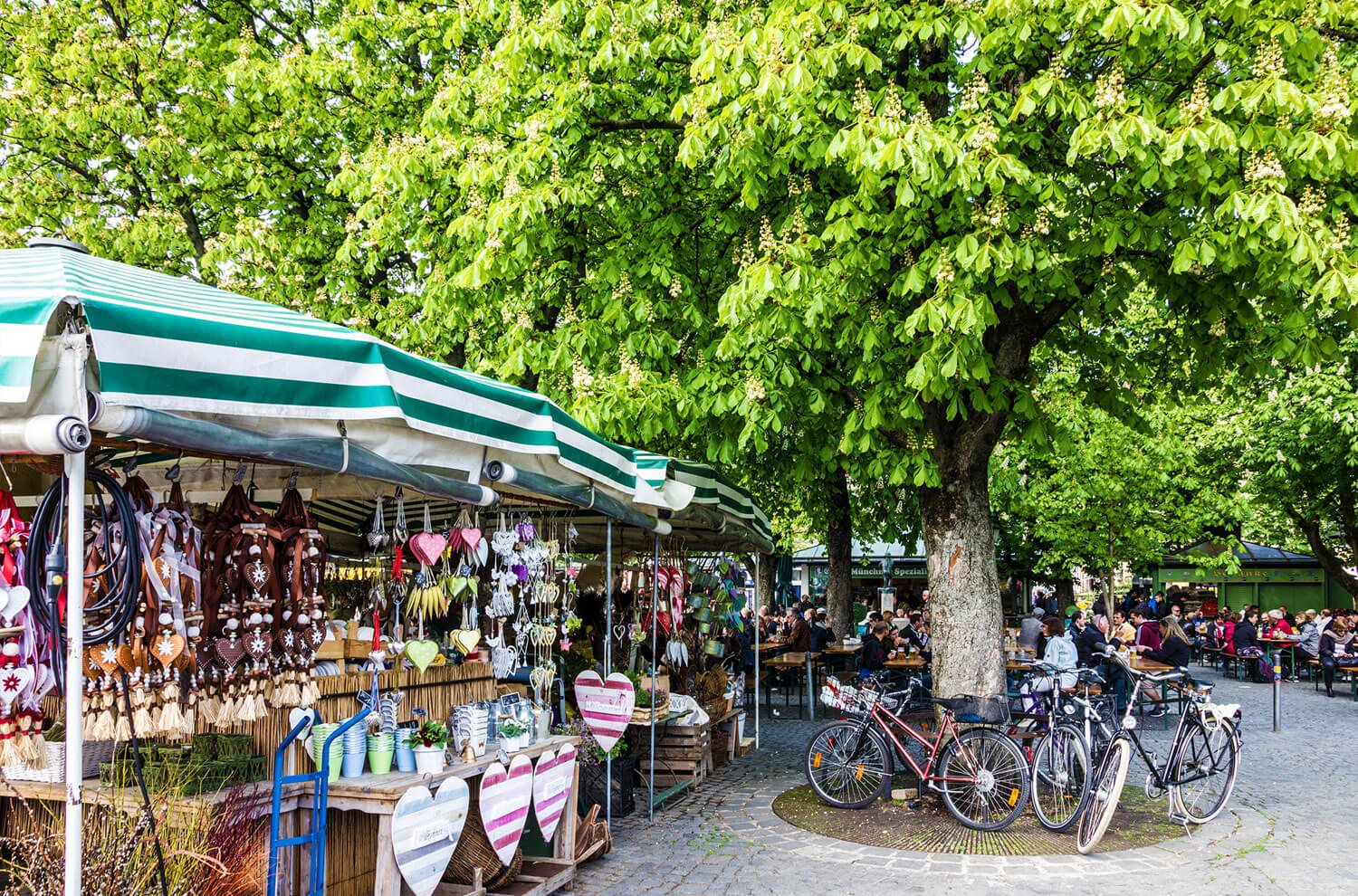
The Viktualienmarkt is located in Alstadt off the Marienplatz U-bahn and S-bahn stops and is open six days a week.
Residenz (Royal Palace)
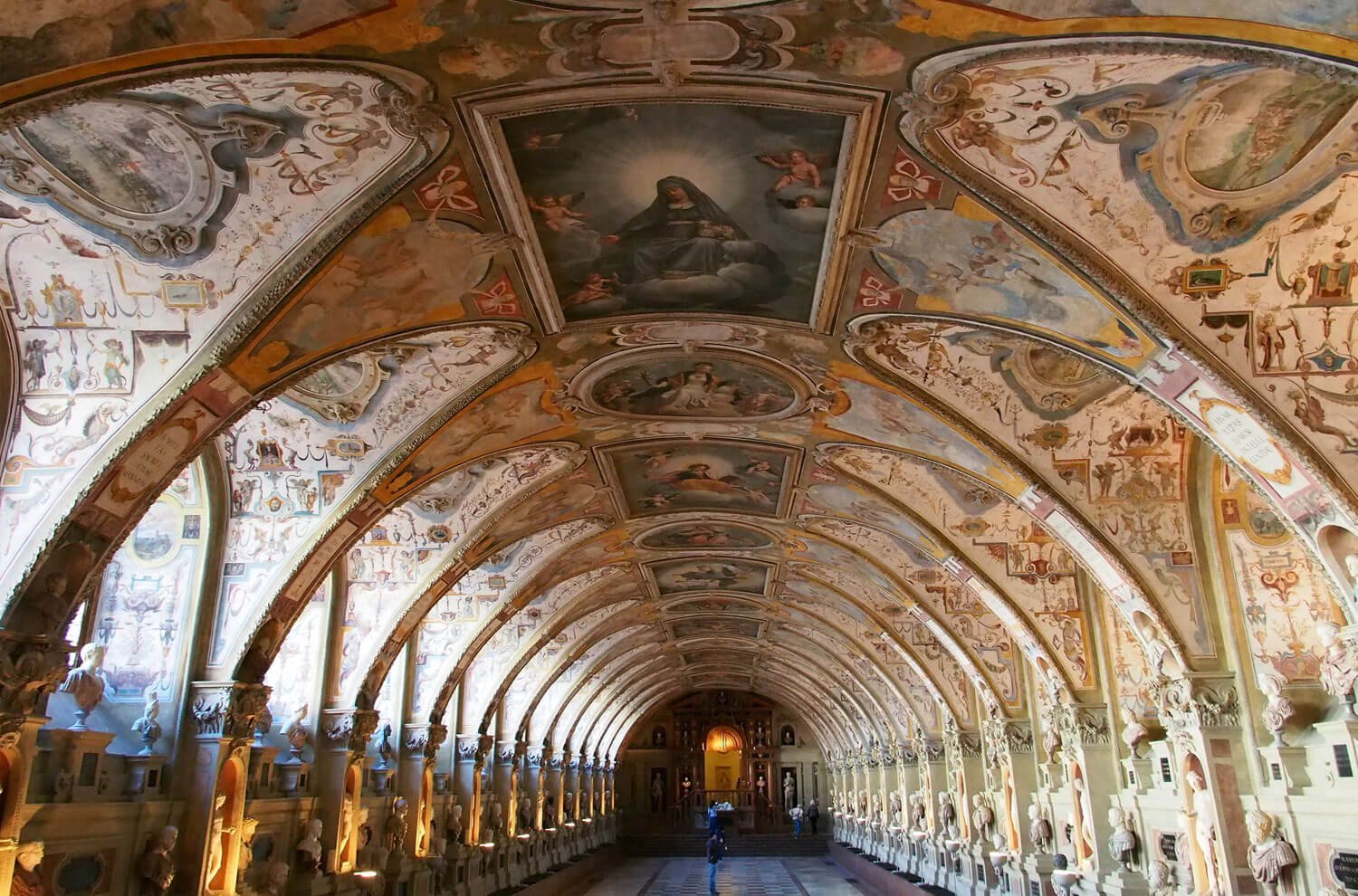
Located centrally, the Residenz was inevitably damaged severely in the Allied bombing of 1944-45, and its reconstruction took decades. It is a big draw with for tourists who find it an elating experience to wander around the Residenz. Its highlights include crown jewels, the state collection of Egyptian art, the Cuvilles theatre and the Herkulessaal concert hall. Beautiful courtyards, fountains, grottoes, a medicine room, a chapel and much more, decorate the outside area.
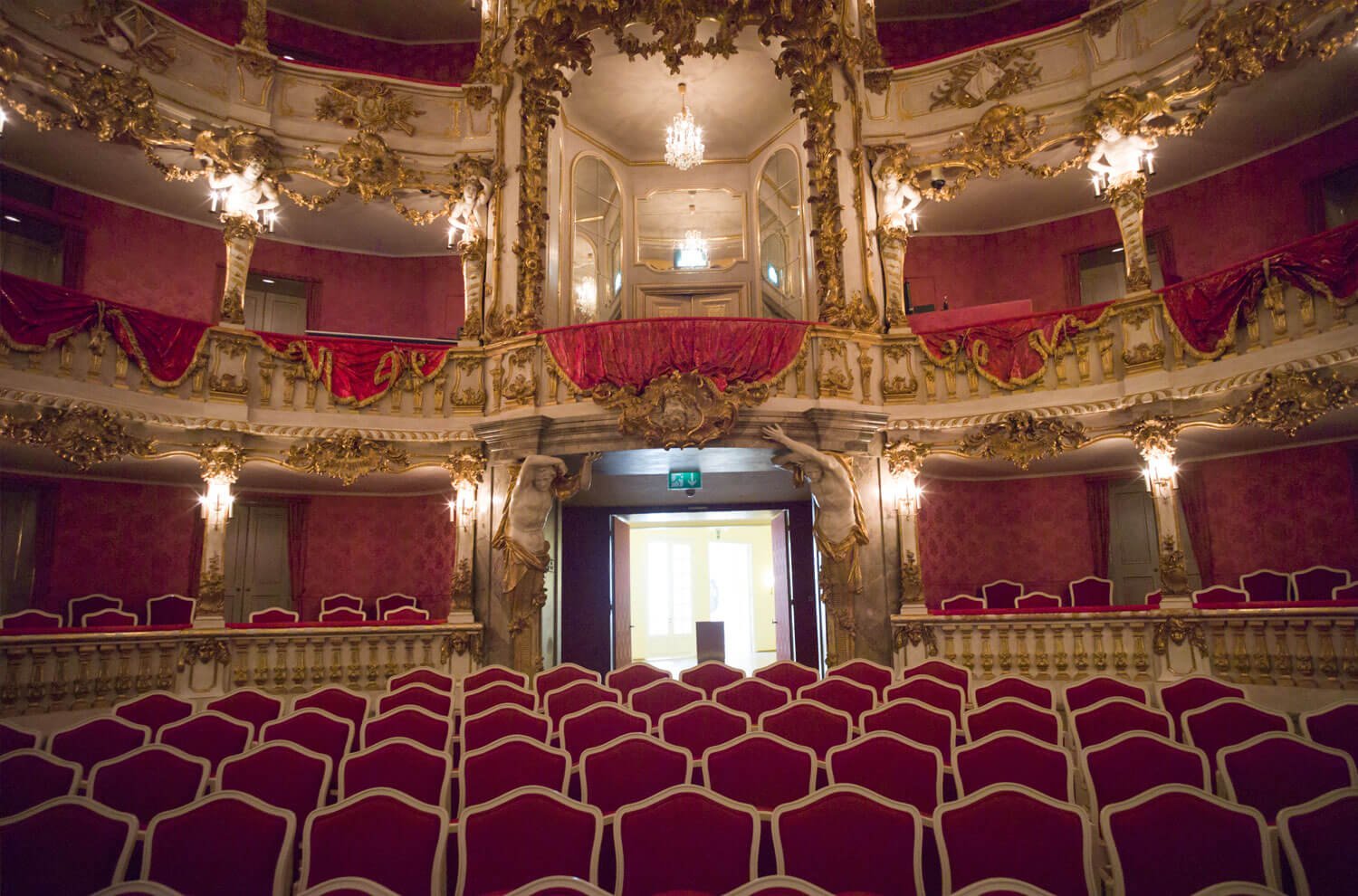
Schatzkammer (Treasury).
It contains many masterworks that includes a host of treasures from Wittelsbach royal crown jewels. The crown of Bavaria’s first king, Maximilian I, created in Paris in 1806-07, is the highlight. A renowned 50 cm high Renaissance statue of St. George studded with diamonds, pearls and rubies, is an incredible centrepiece of the Schatzkammer collection.
The building is off the Odeonsplatz U-bahn station.
BMW MUSEUM
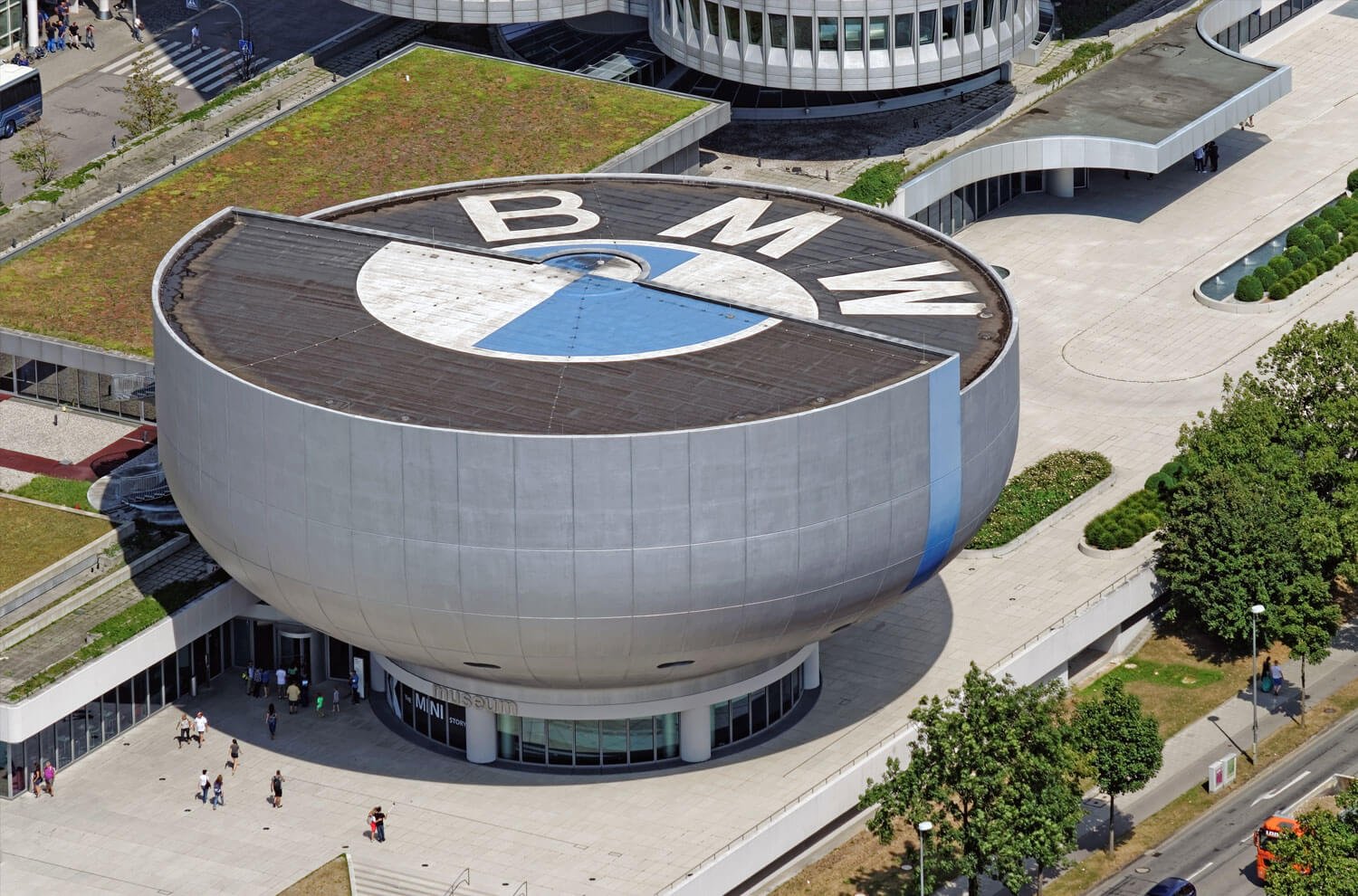

The BMW factory adjacent to it, can be visited on weekdays. Plant tours, lasting 2 ½ hours, need to be registered in advance via phone. The tour begins at 4 p.m. and finish at the information counter at BMW Welt. The tour doesn’t include the car assembly area, as the plant reconstruction is underway. This would mean there is no wheelchair access too. Reservation at least two weeks prior to visit is recommended for all tours.
BMW Welt tour €7; factory tour €8. BMW Welt is open Mon.–Sat. 9–6, Sun.10–6. Olympiazentrum (U-bahn).
BMW Tower
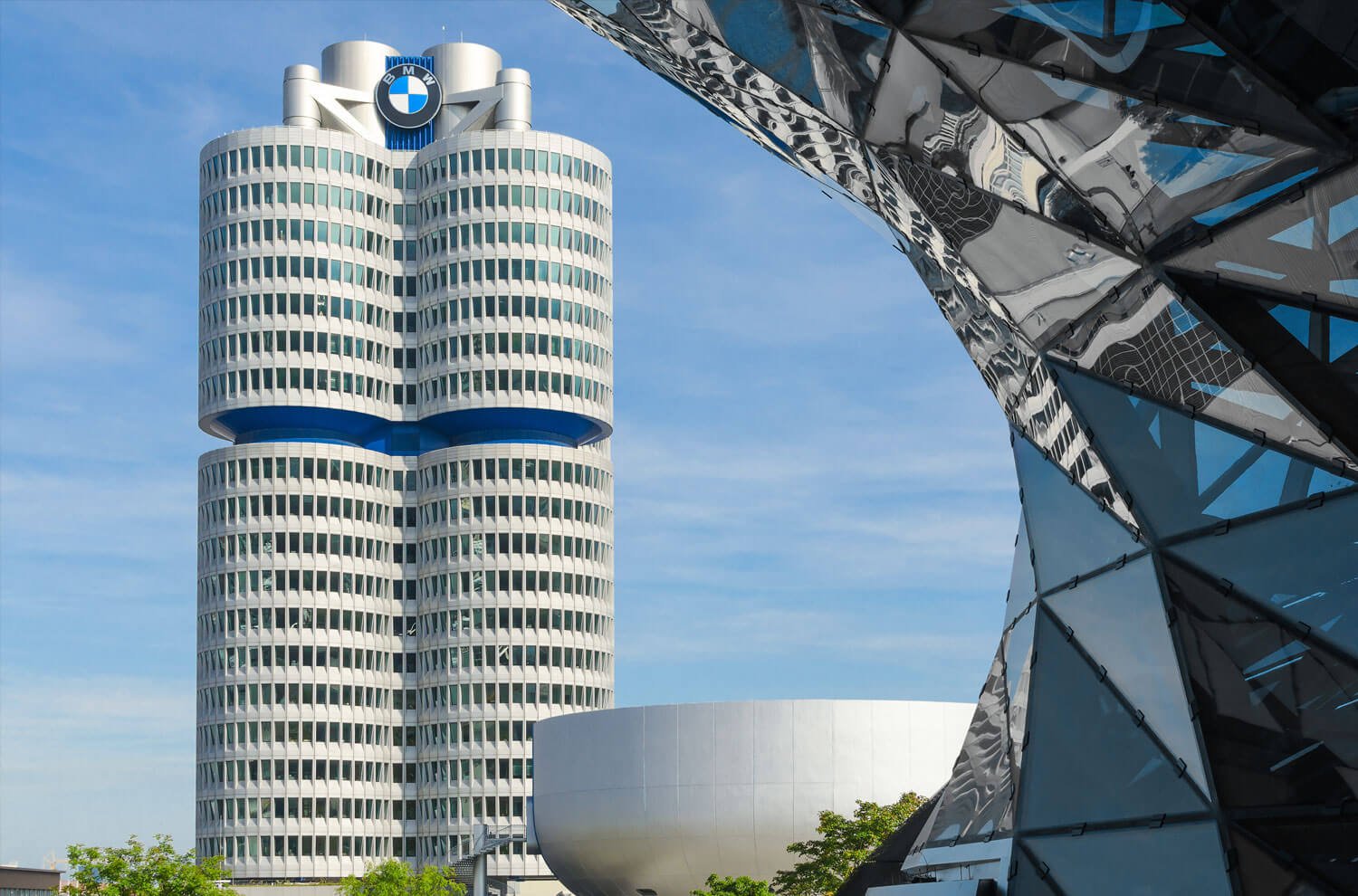
Nymphenburg Palace (Schloss Nymphenburg)

Schloss Nymphenburg is the summer home of the royal Wittelsbach family. It extends to the west of the city, covering nearly 500 acres. King Ludwig I’s ‘Gallery of Beauties’ is a portrait gallery of 36 beautiful women of the day, one of the few interesting piece of art featured in the palace.
A trip in spring or summer will enthral you as the palace grounds would be in full bloom. Warm weather makes forest walks highly enjoyable. Open daily, the palace also has abbreviated opening hours during winter.
ANDECHS MONASTERY
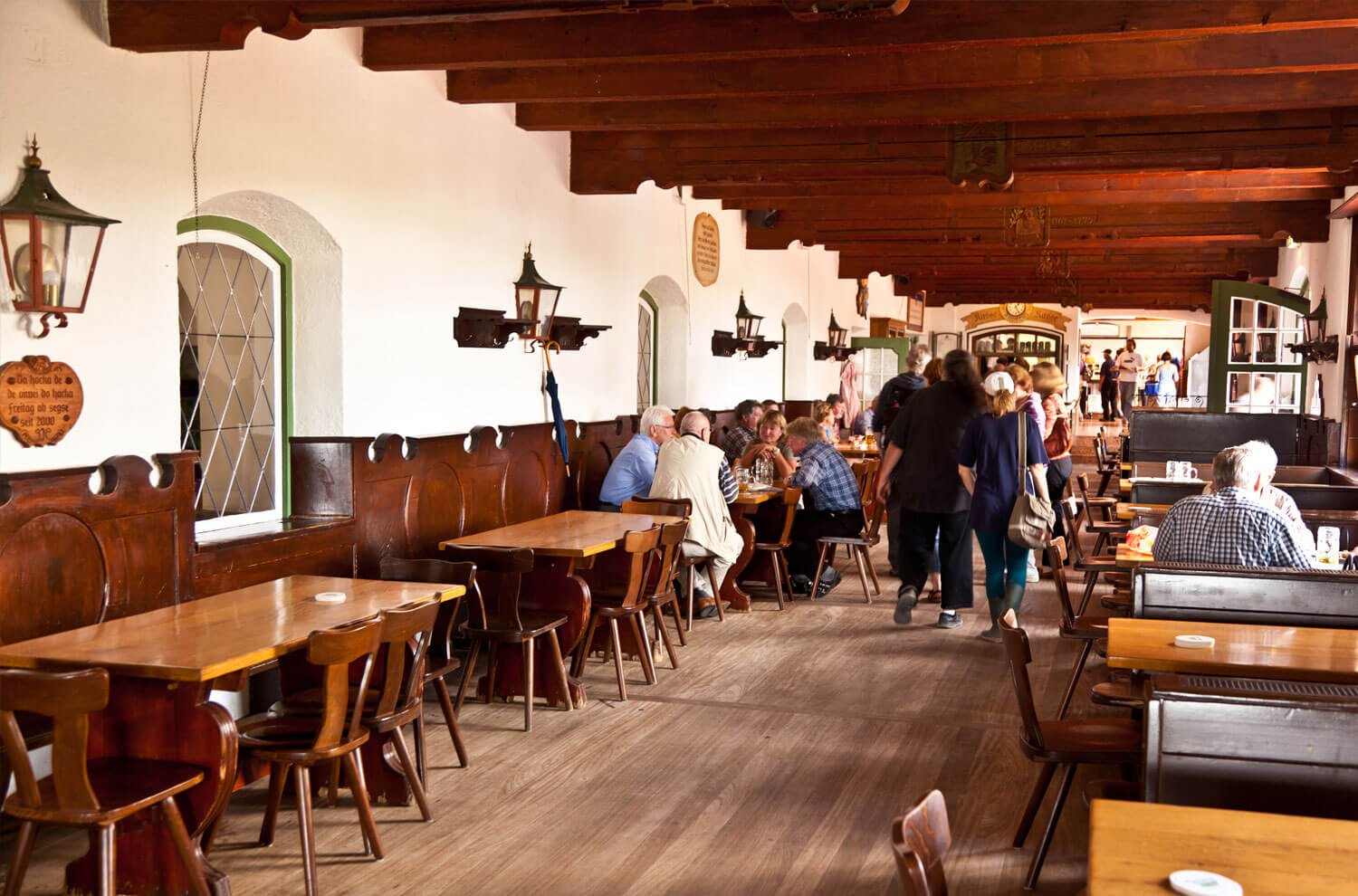
Andechs is a Benedictine monastery, and one of the famous pilgrimage sites of southern Bavaria. It lies 5 km south of Herrsching and can be reached by Bus 951 from S-bahn station (also connects Ammersee and Starnbergersee). The extraordinary ensemble, surmounted by an octagonal tower and the dome with a pointed tip has its history dating back 1,000 years.
It is not just the beauty of the hilltop monastery that draws visitors. The beer brewed here plays a part in it too as 600,000 litresof beer are brewed annually. The monastery serves Bavarian food and makes its own cheese too! Enjoy the food and beer at the monastery tavern or on the terrace outside.
HOFBRÄUHAUS

This is Munich’s most famous brewery and was founded by Duke Wilhelm V in 1589. It has been at the present location since 1808. Year 1897 saw it requiring to be modernized, as beer and restaurants became major contributors to the city’s economy. Its final major reconstruction work happened in 1950 after its destruction in the war. Hofbräu means ‘court brewery’. The golden beer, poured in pitcher-size litre mugs, can be relished with the music performed by the brass band on most days. The noisy ground floor is contradicted by the quieter restaurant upstairs. This legendary beer hall is a major hit with visitors to Munich.
Asamkirche
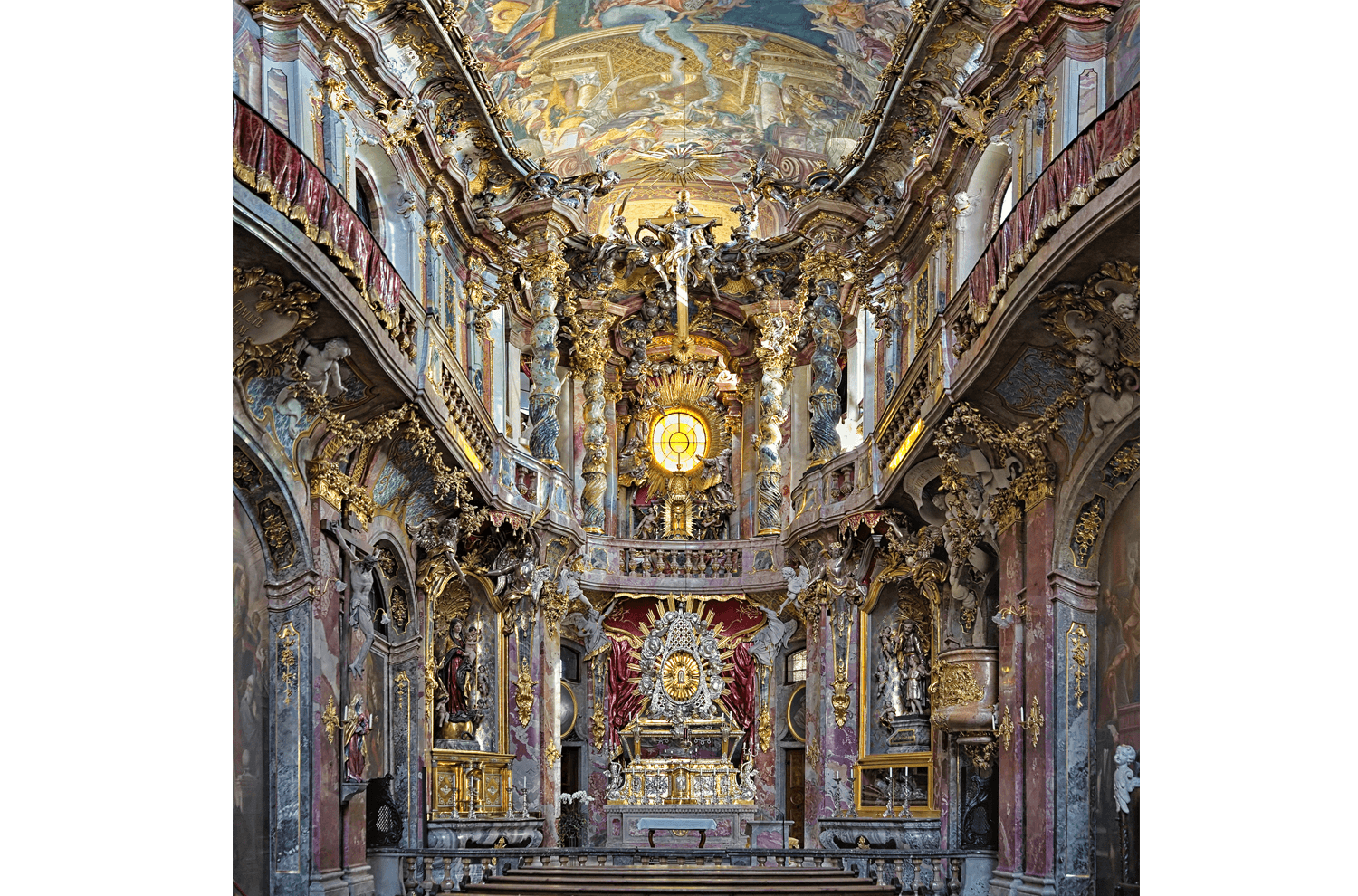
OKTOBERFEST GROUNDS AT THERESIENWIESE
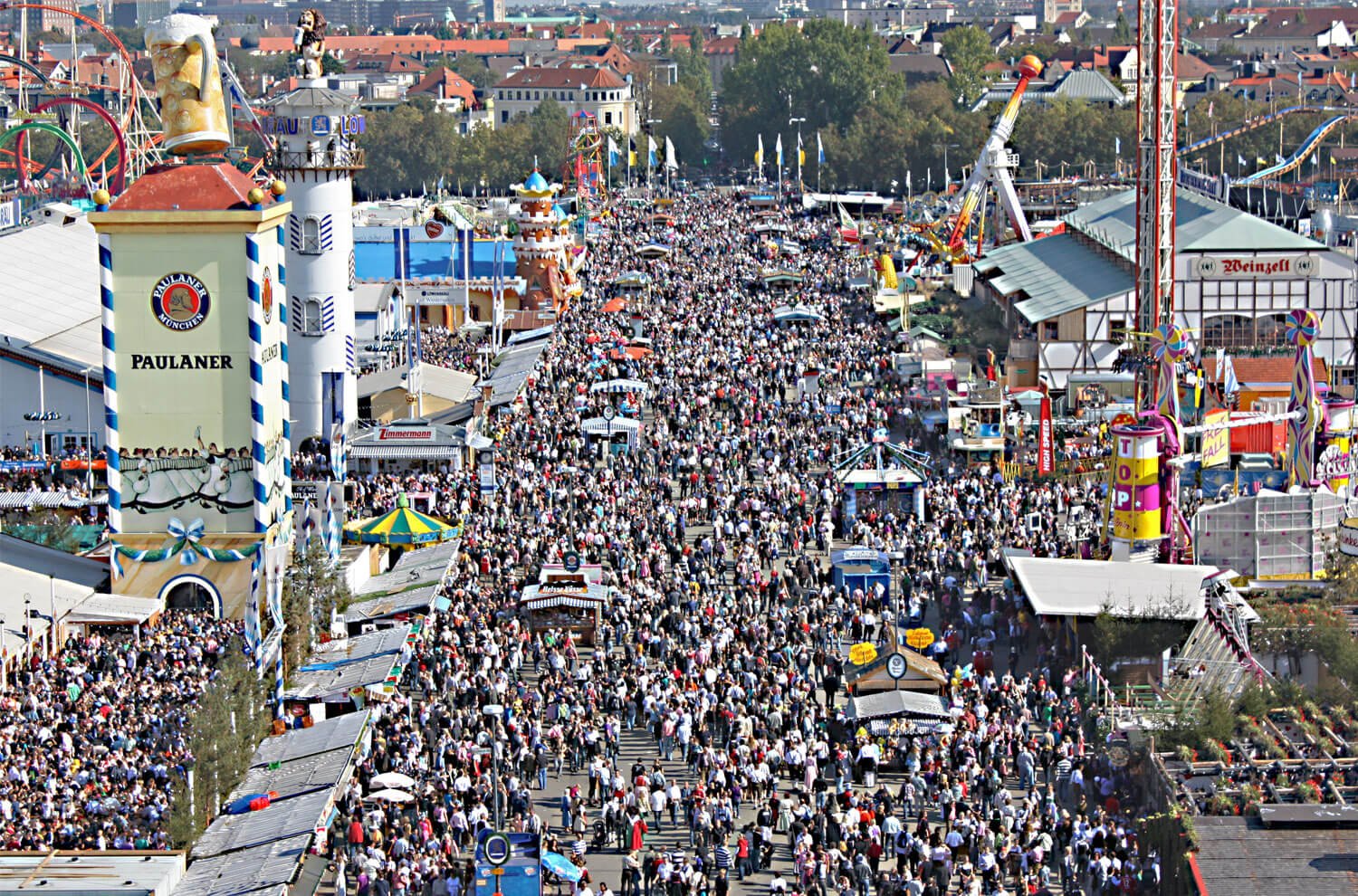
Bavaria Statue
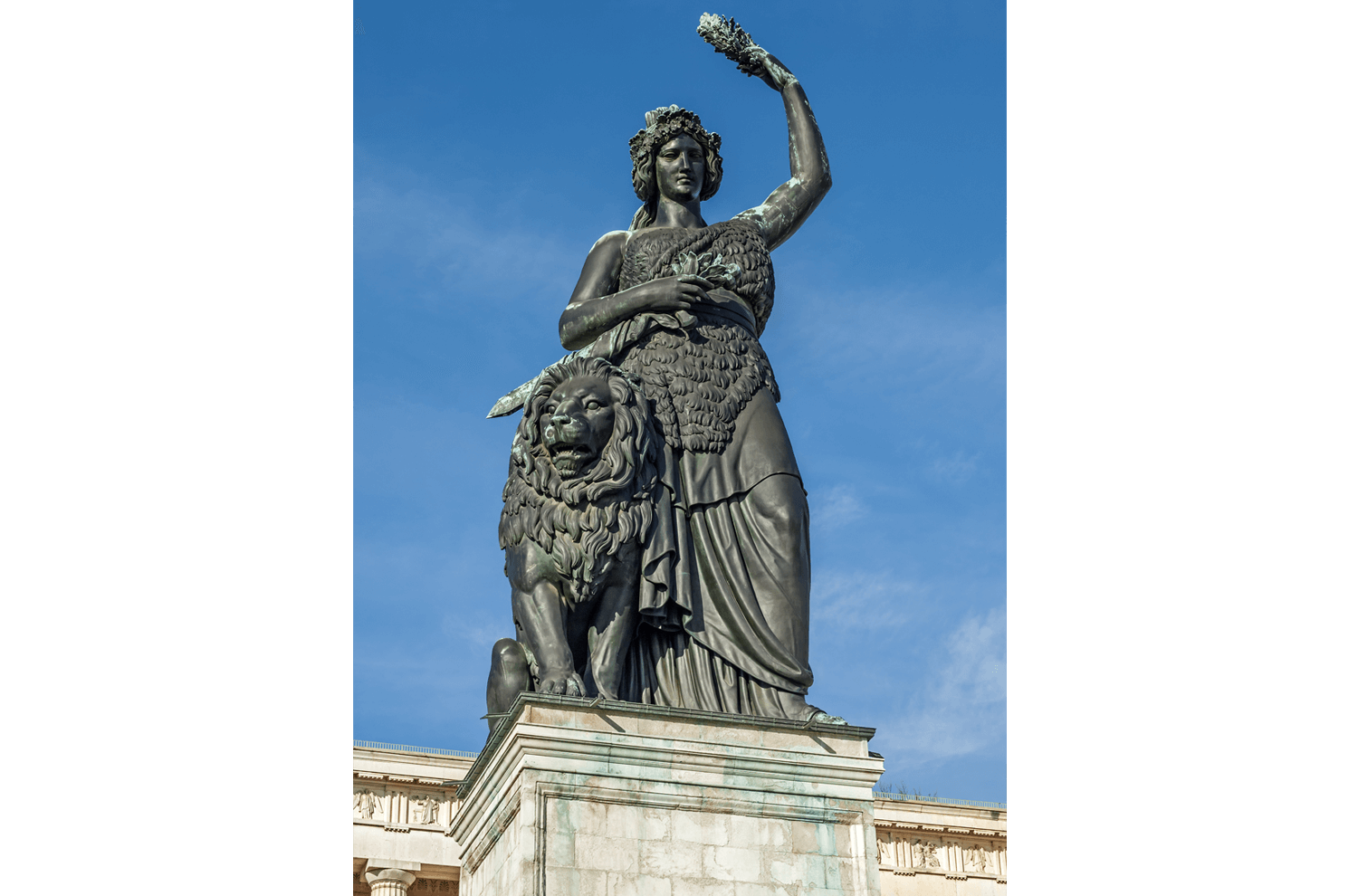
DACHAU CONCENTRATION CAMP MEMORIAL SITE
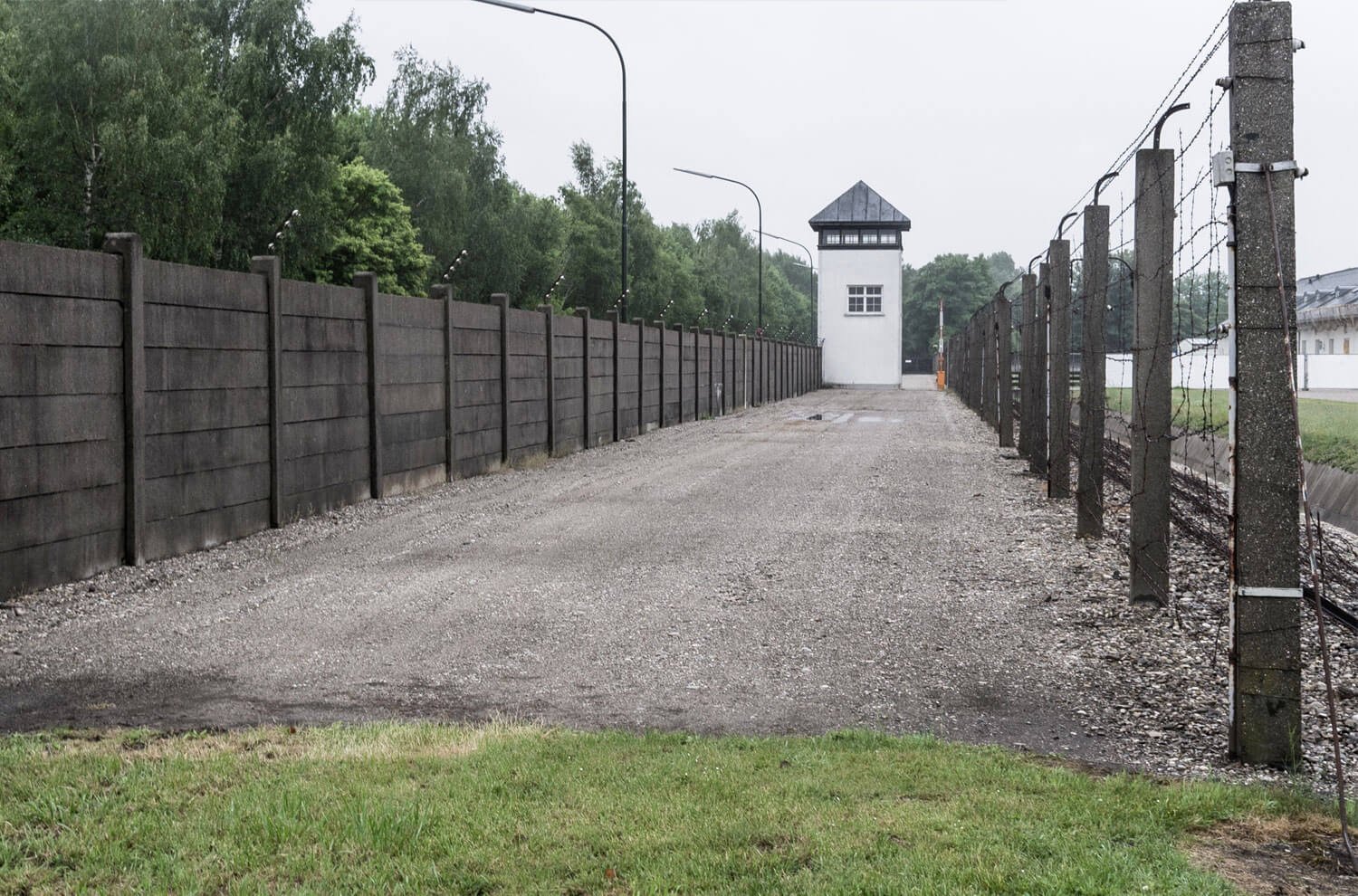
From Marienplatz or Hauptbahnhof, take S-2 (public transport) towards Petershausen and disembark at Dachau. From outside the Dachau S-bahn station a bus (726 towards Saubachsiedlung, leaves every 20 minutes) can be taken.
HOHENSCHWANGAU AND NEUSCHWANSTEIN
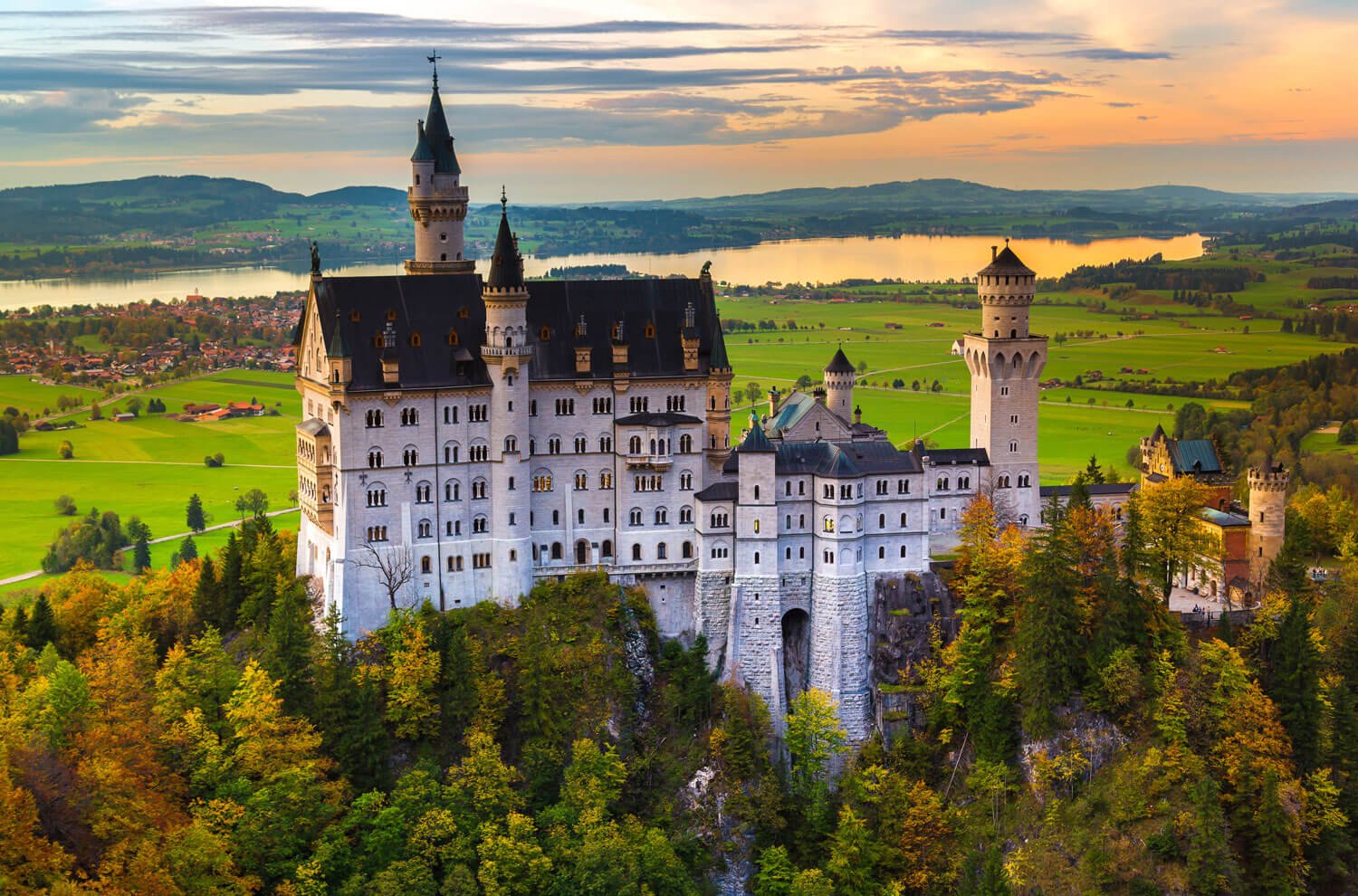
Berchtesgaden National Park

Königssee

The serene emerald green Königsee offers a picturesque, memorable moments to be cherished for a lifetime. The lake, cradled by the mountain walls 5 km south of Berchtesgaden, is Germany’s highest lake (603m) with shimmering, deep, clear water. Buses 841 / 842 starts the trip from the Berchtesgaden train station roughly every hour.
Taking the path along the lake shore helps avoid the crowd. It is a 3.5 km return walk to Malerwinkel (Painter’s corner), a vantage point to get a panoramic view.

Boat service
Garmisch-Partenkirchen
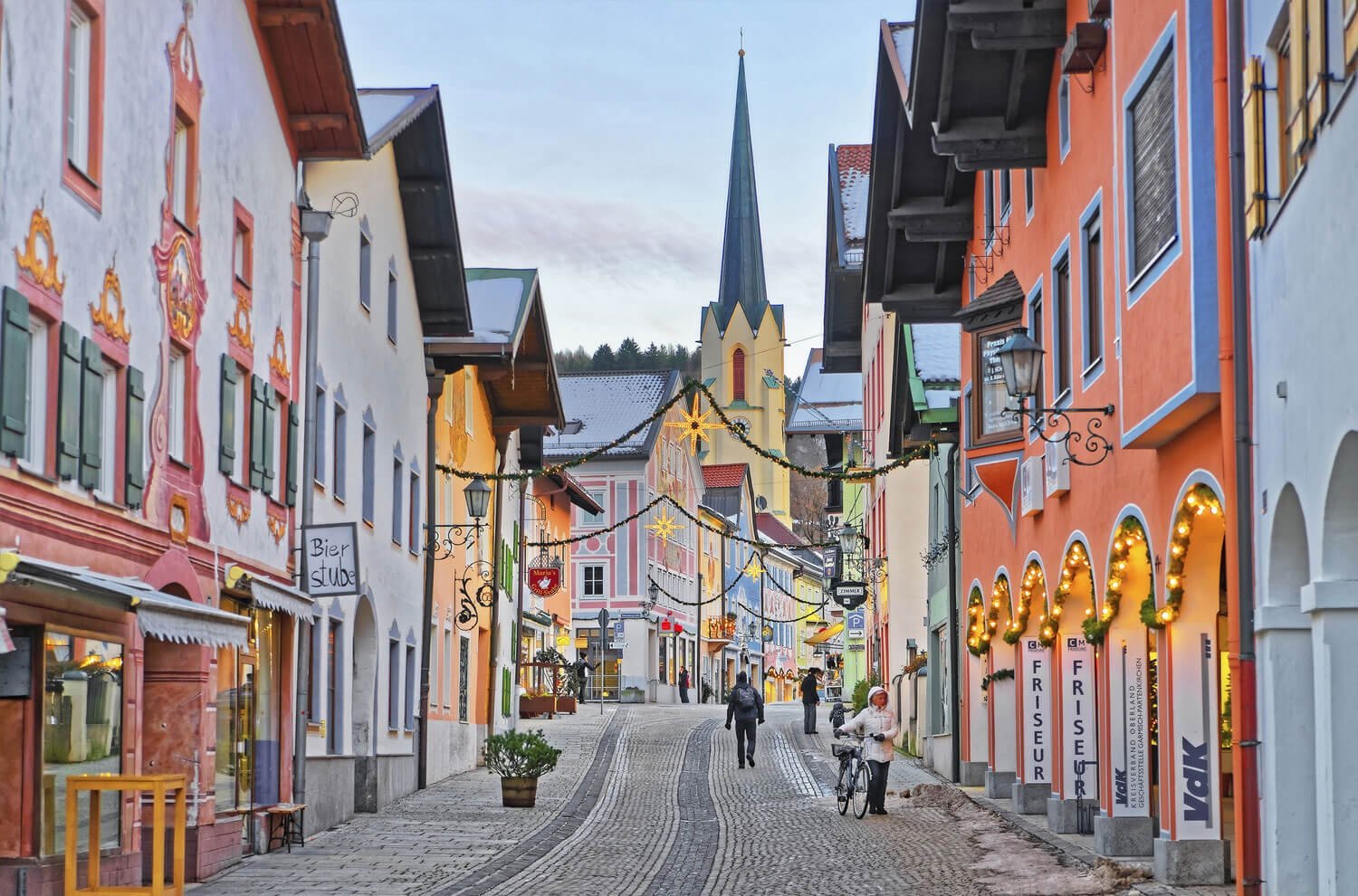
The place is a unison of the two towns Garmisch and Partenkirchen, made by a decree of Adolf Hitler, in order to bring the 1936 winter Olympics to Germany. As the International Olympic Committee was about to reject Germany as a possible host as the town offered very few hotel rooms, Hitler forced the unification of the towns to make it appealing to the IOC.
Now, the united town is one of Germany’s premier tourist ski towns and provides excellent skiing, hiking and biking opportunities. Lying a few kilometres from the Austrian border, the twin towns, though united, have retained their individuality. Garmisch is more modern, while Partenkirchen offers an old-world Alpine village ambience.
A comfortable base for excursions to Ludwig II’s palaces, Schloss Linderhof and the Jagdschloss Schachen, and also the Oberammergau and Neuschwanstein and Hohenschwangau castles, Garmisch-Partenkirchen is a great place to plan your tour from.
Salzburg (Austria)
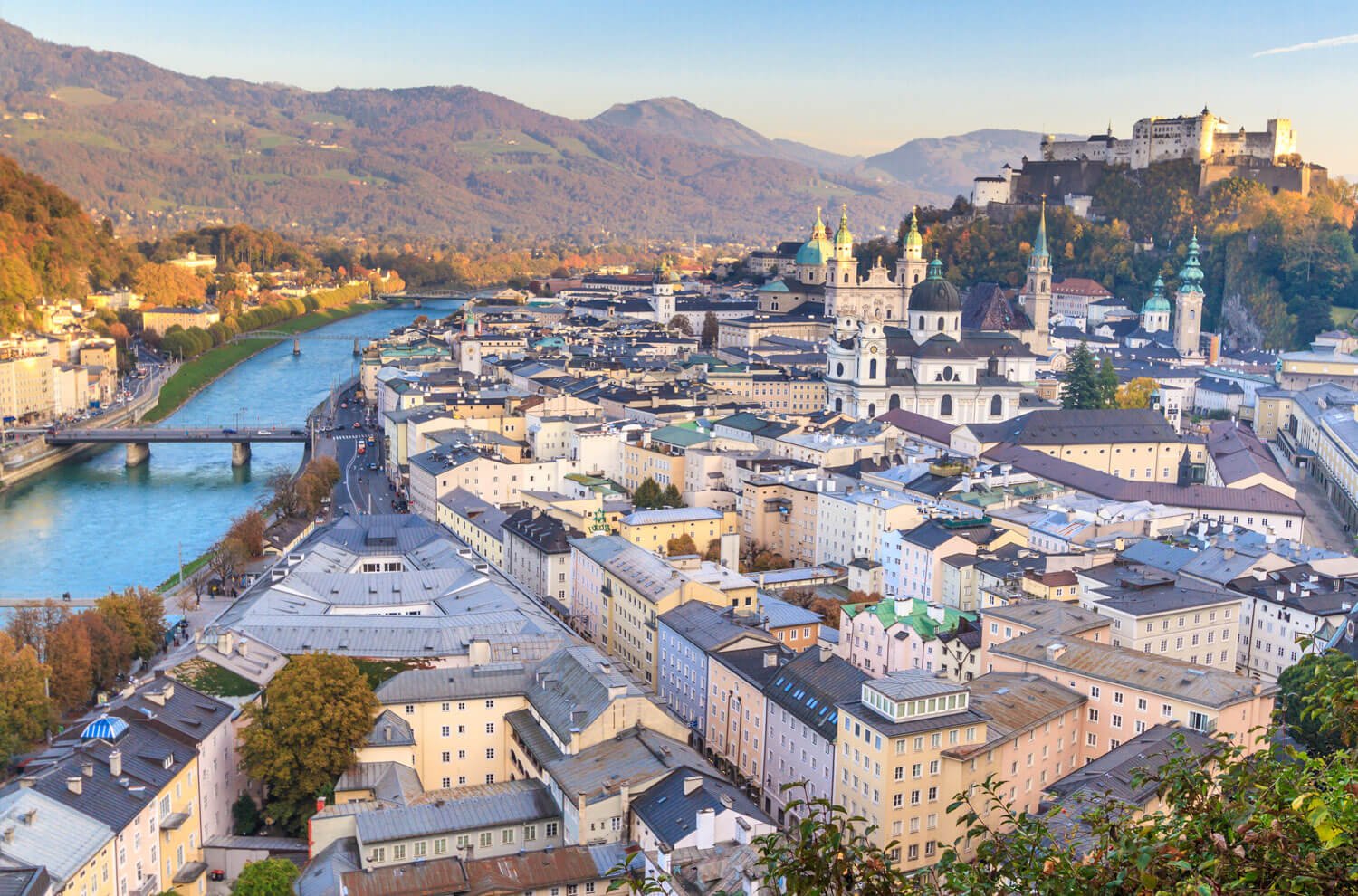
FESTIVALS
The festival – Long Night of Music – has night long with music and live performances by many groups, ranging from heavy-metal bands to medieval choirs, at over 100 locations throughout the city. Everything including transportation on special buses between locations, is covered with a single ticket.
Oktoberfest
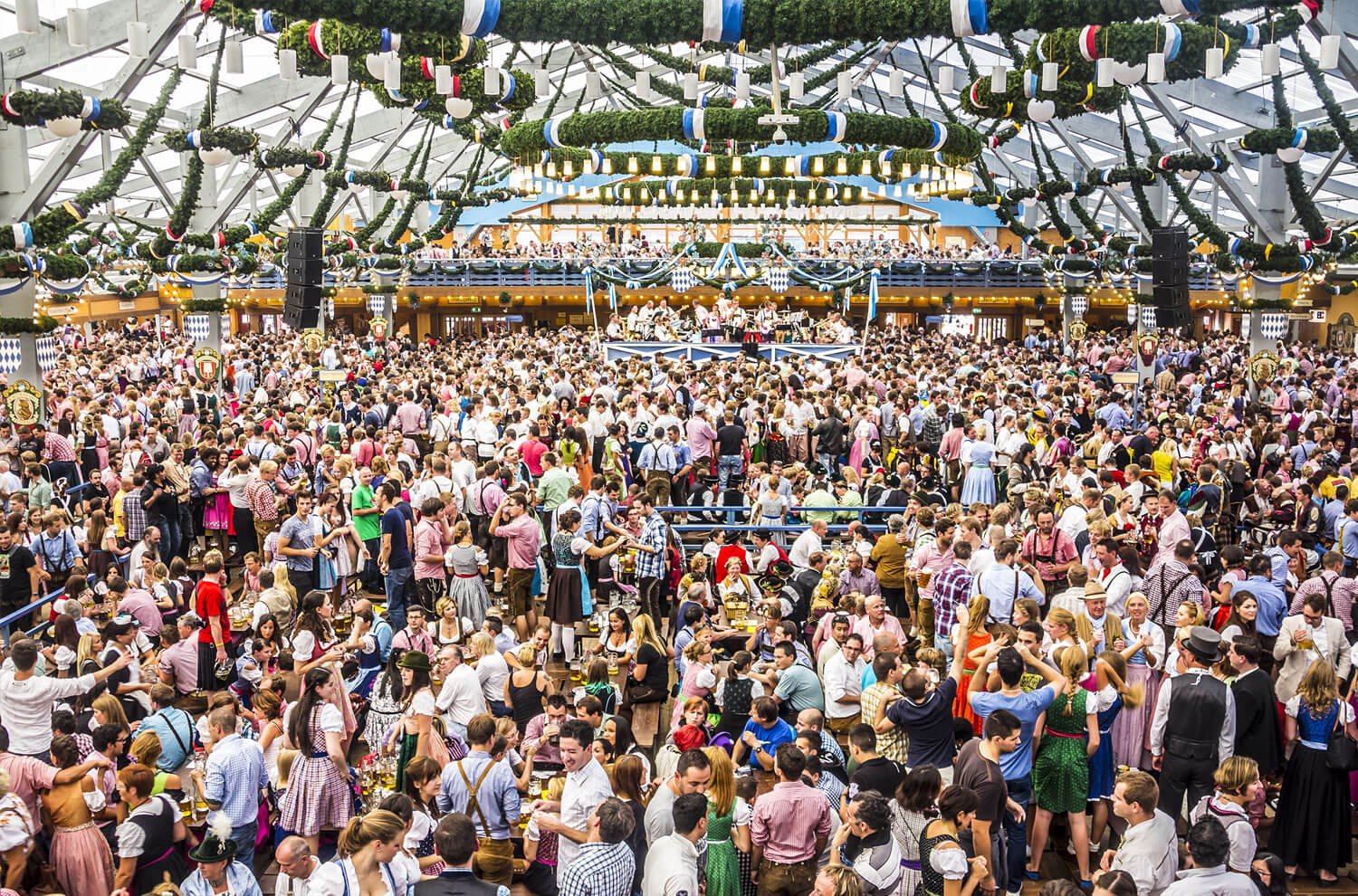
The Oktoberfest draws millions of people to Munich, who visit the grounds, partake in the merrymaking in massive tents and relish the beer drunk from heavy glass mugs and boots! The massive tents are an attraction in themselves, as each one of them is unique in size, décor and the crowds they attract. Hopping between tents is the best way to enjoy Oktoberfest. Allot a festival day to visit each one of them. Entry is free. Visitors are just charged for what they consume.
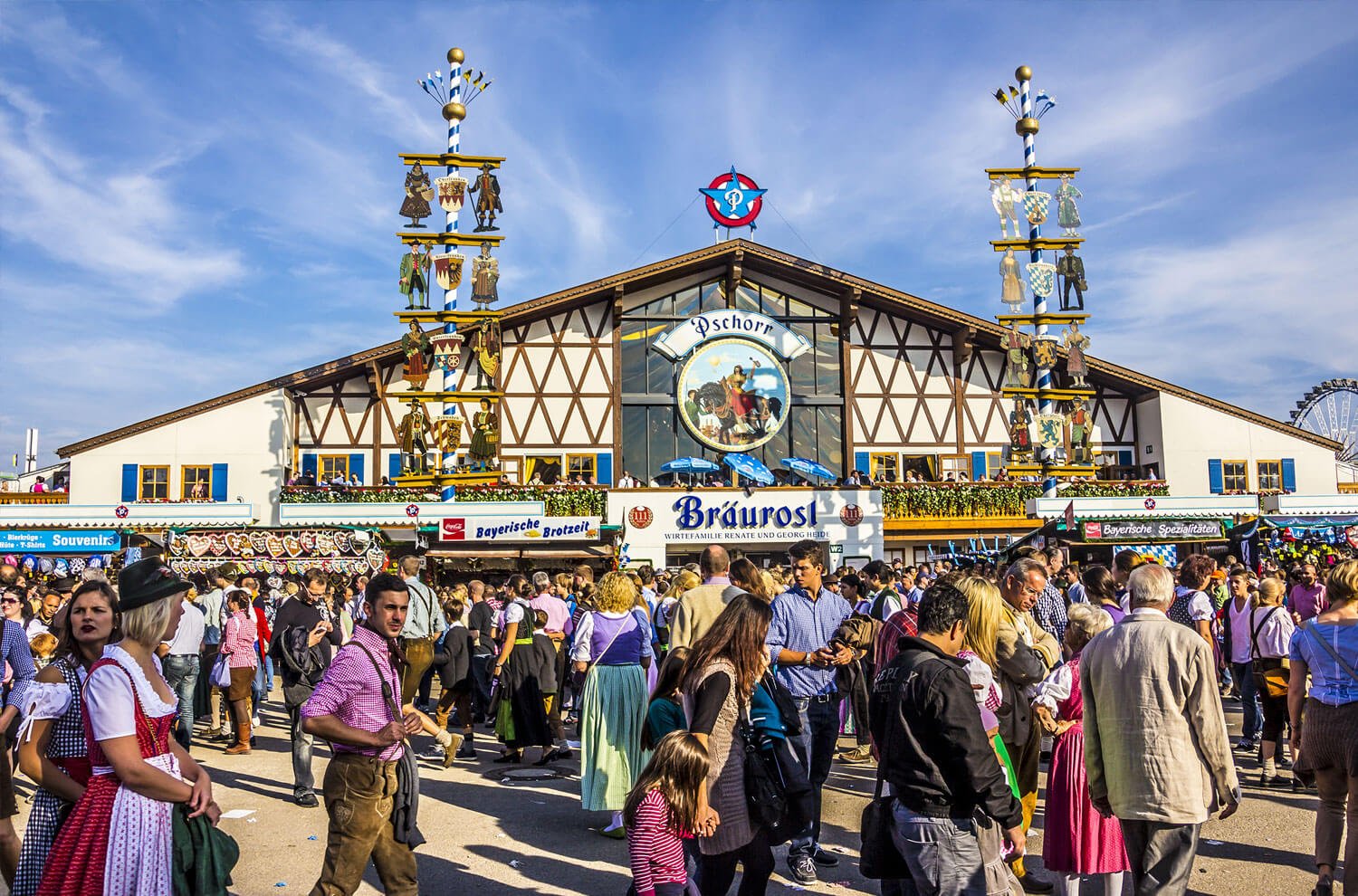
Weekends are for huge parties. Weekdays see a calmer Oktoberfest experience and there are special weekday lunchtime food menus that many tents offer.

